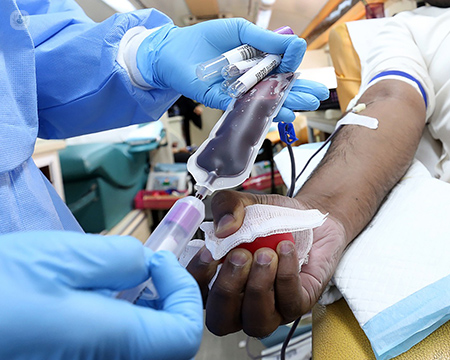Liquid biopsy
What is being analysed?
Liquid biopsy is a non-invasive diagnostic technique that involves analysing various biomarkers present in bodily fluids such as blood, urine, or cerebrospinal fluid. These biomarkers can include circulating tumour cells (CTCs), cell-free DNA (cfDNA), circulating tumour DNA (ctDNA), microRNAs, proteins, and other molecules shed by tumours or other pathological processes in the body.

What does the result mean?
The results of a liquid biopsy can provide valuable information about the presence, characteristics, and progression of diseases such as cancer, infections, autoimmune disorders, and genetic conditions. By analysing specific biomarkers, healthcare providers can tailor treatment plans, monitor disease progression, assess treatment response, and detect the emergence of resistance mutations.
Why is the analysis performed?
Liquid biopsy offers several advantages over traditional tissue biopsies, including its minimally invasive nature, ability to capture tumour heterogeneity, and potential for serial monitoring of disease progression or treatment response. It can also provide insights into tumour evolution and the development of drug resistance, guiding the selection of targeted therapies and personalised medicine approaches.
When should the analysis be done?
Liquid biopsy can be performed at various stages of disease management, including initial diagnosis, treatment selection, monitoring of treatment response, detection of minimal residual disease, and surveillance for disease recurrence. The timing of the analysis depends on the specific clinical context and the goals of the healthcare provider.
What sample is required?
The most common sample types used for liquid biopsy are blood and plasma, as they contain circulating biomarkers shed by tumours or other pathological processes. In some cases, other bodily fluids such as urine, saliva, cerebrospinal fluid, or pleural effusions may also be analysed depending on the suspected disease or condition.
Is any prior preparation necessary?
In most cases, no special preparation is required for a liquid biopsy. Patients may be asked to refrain from eating or drinking for a short period before the procedure, particularly if a blood sample is being collected. However, specific instructions may vary depending on the doctor’s recommendations and the type of analysis being performed.
How is the analysis done?
Liquid biopsy samples are collected using standard blood-drawing techniques or other minimally invasive procedures. The samples are then processed in a laboratory using various molecular biology techniques to isolate and analyse the biomarkers of interest. The results are interpreted by healthcare providers in conjunction with other clinical and imaging findings to guide patient management decisions.
What are the normal values?
The normal values for liquid biopsy biomarkers can vary depending on the specific analyte being measured and the laboratory's reference range. Below is a table summarising the normal ranges for some common liquid biopsy biomarkers:
|
Biomarker |
Normal Range |
|---|---|
|
ctDNA (plasma) |
<0.1% of total cell-free DNA |
|
Circulating tumour cells (per mL of blood) |
<5 cells/mL |
|
MicroRNAs (plasma) |
Variable |
|
Protein markers |
Variable |
What does having altered values indicate?
Altered values in liquid biopsy biomarkers may indicate the presence of underlying pathology, such as cancer, infection, autoimmune disease, or genetic abnormalities. The significance of these alterations depends on various factors, including the specific biomarker, its concentration, the patient's clinical history, and other diagnostic findings. Further evaluation, including imaging studies, tissue biopsies, or additional laboratory tests, may be necessary to confirm the diagnosis and guide treatment decisions.
In conclusion, liquid biopsy is a valuable diagnostic tool that offers insights into various disease processes, enabling personalised and precise patient care. By analysing biomarkers present in bodily fluids, healthcare providers can make informed decisions regarding diagnosis, treatment, and disease monitoring.